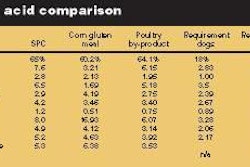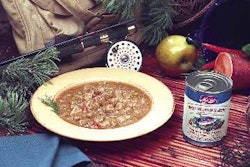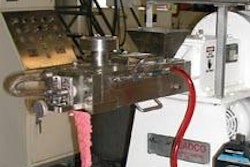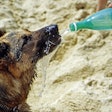Marketing is brand building. Conventional marketing is based on selling, when it should be based on branding, contends author Laura Ries (The 22 Immutable Laws of Branding). "Marketing is not selling," she says. "Marketing is building a brand in the mind of the prospect."
Reis thinks that if you can build a powerful brand, you will have built a powerful marketing program. If you can't, then no amount of clever advertising, elaborate packaging, sales promotion, websites and public relations will get you to your objective. Branding pre-sells the product or service to the user. Bottom line, it is a more efficient way to sell things.
What's your brand?
Enough theoretical preaching, let's talk about petfood brands. I think there used to be three major brand areas, but now there are four. Top-quality, customized nutrition; Best tasting; Low price; Human-edible food for pets: the relatively new territory. Here are some examples of how various successful brands communicate their position.
Top-quality nutrition. Brand Packaging
Reis notes that Hill's Science Diet packaging has a clean design and clear language. The product name reflects the benefit. The red Science Diet logo is combined with a blue medallion. It features the phrase "veterinarian recommended," which gains the pet owner's trust.
Best tasting.
The package for 9 Lives cat food emphasizes the brand's tagline "the taste cats crave." The logo and the famous face of Morris the Cat grace the front of the package for each flavor and formula. Flavor is the key benefit.The Mars' Pedigree package features the Pedigree logo, which has a blue-ribbon icon accompanied by the brand's tagline, "developed with vets." The bottom half of the package has flavor claims and product photography. Quality and taste get equal billing.
Low price.
Low-priced brands tend to look low priced, but some do quite well, especially in emerging markets. An increasing preference for more expensive products has taken a toll on economy and mid-priced brands in mature markets. Over the next four years, Euromonitor forecasts premium dog and cat foods will enjoy double the growth rate of mid-priced and economy products.
Human-edible food for pets
Several petfood manufacturers are emphasizing healthy and gourmet meals that are good enough for pet owners to eat. Nestle Purina describes Beneful wet dog food as "family-style" meals made with "real, wholesome ingredients." The food comes in a clear plastic ready-to-serve container that's designed to make the stewlike contents look appealing to pet owners. Among others, Natural Balance, Merrick and Evanger's are also stressing brands that are "human-grade."
Brand equity
The market research firm DDS calls a brand, "a promise made to its customers." Promises that are kept yield loyal customers and steady streams of profits. DDS maintains that brand equity is built by laying a foundation of brand awareness, forming positive brand images and developing high levels of brand loyalty.
Leveraging brand loyalty is the goal. Pamela Batalis of Brand Keys puts it this way: "For the foreseeable future, leveraging customer loyalty will be the primary means by which the most competitive companies will break away from the pack."
Marketing is brand building. Conventional marketing is based on selling, when it should be based on branding, contends author Laura Ries (The 22 Immutable Laws of Branding). "Marketing is not selling," she says. "Marketing is building a brand in the mind of the prospect."
Reis thinks that if you can build a powerful brand, you will have built a powerful marketing program. If you can't, then no amount of clever advertising, elaborate packaging, sales promotion, websites and public relations will get you to your objective. Branding pre-sells the product or service to the user. Bottom line, it is a more efficient way to sell things.


















